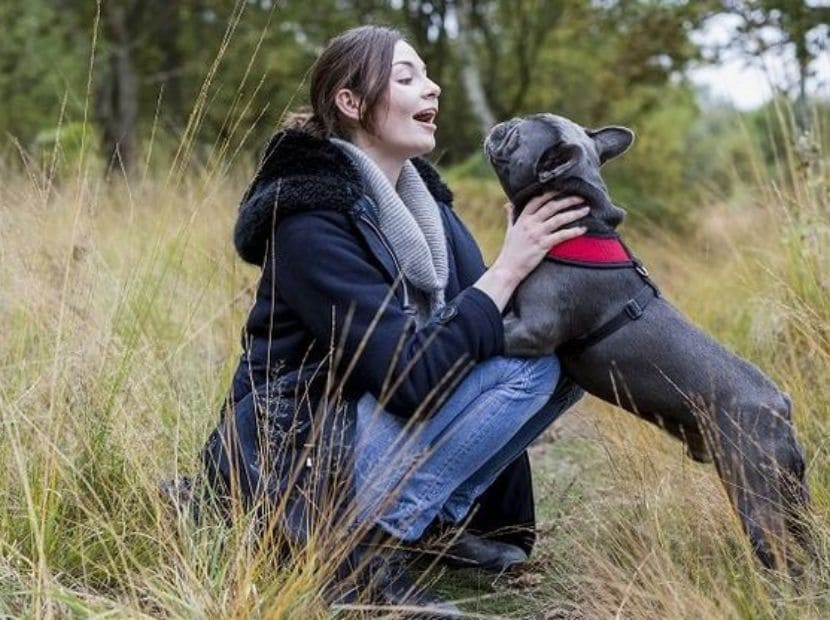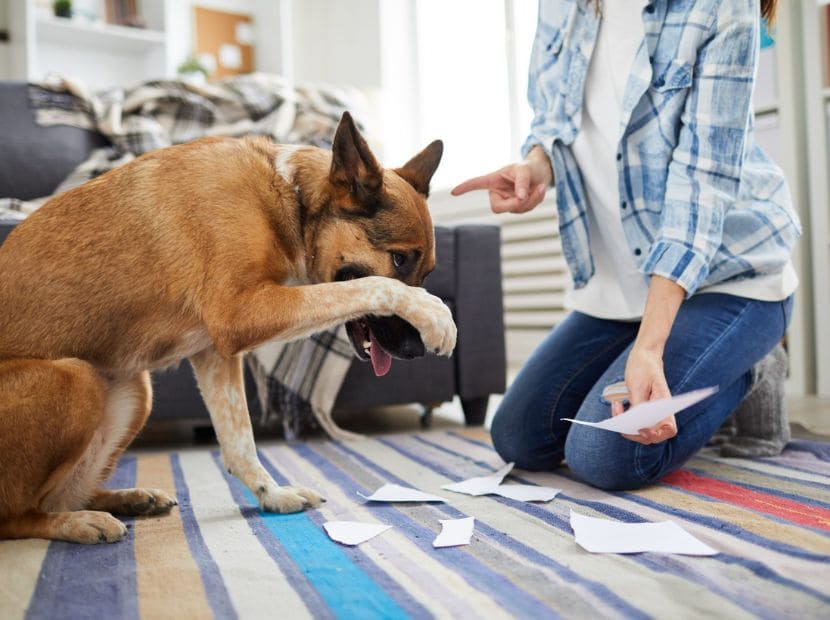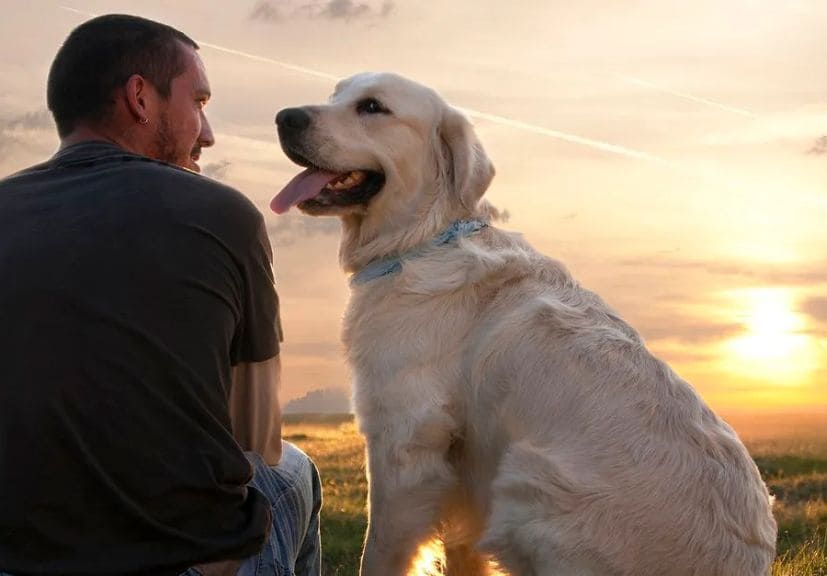Dogs are loyal companions, but building that trust and affection can take time, especially if your dog is a rescue or naturally shy. This blog post will share 15 proven ways to get your dog to love you, improve your bond, and make your dog feel more connected.
15 Ways TO Make Your Dog Love You
Building a strong bond with your dog is essential for a happy and harmonious relationship. Whether you’re a new dog owner or trying to strengthen your connection, understanding what makes your dog feel loved and secure is key. There are proven ways to deepen the relationship, from consistent training to fun activities. Here are 15 effective ways to make your dog like you and truly love and trust you. Let’s dive in!

Understand Your Dog’s Body Language
“Dogs communicate with their bodies.”
Learning how to bond with your dog starts with understanding how they communicate. Dogs use body language to express happiness, fear, or stress. Knowing when your dog is relaxed (tail wagging, ears up) versus anxious (tail tucked, ears back) is crucial in learning how to get your dog to love you.
If you’re thinking, how do I make my dog love me more? The first step is to make them feel understood. Pay attention to subtle cues and respond accordingly.
Approach Calmly and Gently
“Calm energy builds trust.”
If you want to know how to get your dog to like you, approach them calmly and confidently. Dogs pick up on human energy, so an aggressive or overly excited approach might make them nervous.
Are you How can you make a dog like you instantly? Speak softly, use slow movements, and avoid towering over them. If your dog feels comfortable, it’s much easier to bond.
Give Them Time to Adjust
“Let your dog approach on their terms.”
Rushing a relationship with a dog can backfire. If you’ve just brought home a new pet, or even if you’ve had your dog for a while, giving them space can help. If you’re thinking, why doesn’t my dog like me or how to make my dog like me, patience is key.
Dogs, especially rescues, may need time to learn to trust humans. So, how do you make a dog love you? Be patient, and let them come to you when they’re ready.
Use Positive Reinforcement
“Reward the behavior you want to see.”
How do you get your dog to love you? By rewarding their good behavior! Dogs thrive on positive reinforcement, whether a treat, a belly rub, or a kind word. The key is consistency—rewarding your dog when they listen, behaves, or follows a command.
If you want to know how to make your dog like you more, this is one of the best methods. Positive reinforcement helps your dog associate you with good things, strengthening your bond over time.
Establish a Consistent Routine
“Dogs love predictability.”
Dogs feel safe and secure when they know what to expect. If you’re wondering how to make your dog love you or how to bond with a puppy, setting up a daily routine—feeding times, walks, and play sessions—helps your dog feel grounded and cared for.
Routines make dogs feel comfortable, which in turn helps them relax around you. So, if you’re asking how to get my dog to love me—consistency is key.
Engage in Regular Playtime
“Play strengthens your connection.”
Play is a powerful way to strengthen your bond with your dog. Dogs love to engage in fun activities like fetch, tug-of-war, or even chasing toys around the yard. How to make dogs like you? Play with them regularly.
Play helps to release built-up energy, stimulates their brain, and lets them associate you with fun. If you’re curious about how to make your dog love you instantly, start by engaging them in their favorite activities.
Use Your Voice and Tone Effectively
“Dogs respond to the way you speak.”
Your tone of voice is crucial when bonding with your dog. If you want to know how to make a dog love you, speaking in a calm, reassuring voice works wonders.
Dogs are likelier to respond to an upbeat, friendly tone for commands and praise. So, next time you’re wondering how to get your dog to like you more, consider how you’re using your voice.
Pet Them Where They Like It
“Dogs have favorite petting spots.”
Dogs, like people, have preferences when it comes to affection. To figure out how to make your dog love you, it’s important to know where they like to be petted. Most dogs enjoy being scratched behind the ears, on their chest, or under their chin.
If you’re wondering how to get the dog to like you, avoid rough or unwanted petting like head pats or belly rubs unless you know they enjoy it.
Walk Together Often
“Walking together creates bonding time.”
Daily walks aren’t just about exercise but quality time spent together. Walking helps release energy and provides mental stimulation for your dog. If you’re wondering how to bond with your dog or get your dog to like you, make walking part of your daily routine.
Walking also reinforces your role as their leader, helping to build trust and respect. This makes it easier to create a bond with your dog.
Offer a Safe and Comfortable Environment
“Security builds love.”
Usually, dogs are environmentally friendly. They need a safe, secure environment to feel comfortable and connected. Whether it’s their crate, bed, or favorite spot on the couch, providing a cozy space helps them feel relaxed.
How do you get your dog to love you the most? Make sure they feel at home and protected. They’ll naturally bond with you if they know you provide comfort and safety.
Feed Your Dog Healthy and Delicious Food
“Good food equals happy dog.”
To deepen the bond with your dog, ensure they’re well-fed with nutritious food. Dogs associate their owner with their food source, so by feeding them a healthy diet, they’ll naturally trust you more.
How do I get my dog to love me more if you’re thinking?—show them you care by paying attention to their dietary needs.
Respect Their Boundaries
“Give your dog space when they need it.”
Respecting their boundaries is one of the most important ways to bond with your dog. If your dog is tired or wants alone time, give them space.
If you’re wondering why my dog doesn’t love me or how to make my dog like me, pushing them too hard for affection might be the problem. Allow your dog to take the lead on how much attention they want.
Be Patient During Training
“Patience builds trust.”
Training a dog requires patience, especially when they’re still learning. Training plays a huge role when wondering how to get a dog to bond with you. Dogs who feel successful in training are happier and more confident.
By taking time to teach your dog basic commands, you’re also showing them leadership and consistency. If you’re thinking, how do I make my dog love me more?—train them consistently but kindly.
Reward Their Good Deeds with Treats and Affection
“Treats are the way to your dog’s heart.”
Treats are a universal language of love for dogs. When you ask yourself how you get your dog to like me, using treats to reward their good behavior is an excellent start.
Remember to balance treats with affection so your dog doesn’t rely on food alone to feel loved.
Spend Quiet Time Together
Dogs enjoy quiet companionship. Whether reading a book, watching TV, or relaxing, simply being near your dog can strengthen the bond. If you’re curious about how to bond with your puppy or make your dog feel loved, quiet time together is just as valuable as active play. Being present and available to your dog helps them feel secure and loved.
Understanding Dog Behavior: Why Bonding Takes Time?
Dogs, especially those from shelters or traumatic backgrounds, may take longer to form a bond. Patience is crucial if you’re wondering how to make your dog love you or get a dog to trust you. Building trust with a dog who’s had a tough start requires extra care and understanding.
Building a bond with a dog, especially from a shelter or a traumatic background, requires time, patience, and understanding. If you’re wondering how to make your dog love you or get a dog to trust you, it’s essential to realize that bonding doesn’t happen overnight. Dogs have unique histories and personalities influencing their interactions with new people like humans.
The Importance of Patience
For dogs who have experienced trauma, neglect, or frequent changes in their environment, trusting a new person can be a challenge. These dogs may exhibit fear, anxiety, or even aggression in unfamiliar situations. It’s important not to rush the process or expect instant affection. Instead, let your dog set the pace. You show them they are safe by providing consistent care, respect, and love, which is the first step in building a trusting relationship.
Signs Your Dog Is Learning to Trust You
Initially, a dog may keep their distance, avoid eye contact, or show signs of stress. However, over time, subtle changes in their behavior—like coming to you for a pat, leaning into your touch, or following you around the house—are signs of trust growing. Celebrate these small victories, which indicate that your patience is paying off.
Creating a Safe, Positive Environment
Creating a predictable and secure environment is one of the best ways to build a strong bond with a fearful or anxious dog. Stick to a routine, avoid overwhelming situations, and use positive reinforcement when they display good behavior. Over time, these steps will help the dog learn to relax, feel safe, and eventually open up emotionally to form a deep, loving bond. In the end, patience truly leads to love.
Common Mistakes to Avoid When Trying to Build a Bond
If you’re asking how I get my dog to like me or how to make a dog love you, there are certain behaviors to avoid. Shouting, inconsistent commands, or being forceful with affection can confuse your dog and damage your bond.
Forming a strong, loving relationship with your dog takes time, patience, and consistency. However, several common mistakes can hinder the bonding process. Understanding and avoiding these errors can create a more positive and secure environment for your furry friend. Below are some key mistakes dog owners often make and tips on correcting them.
Inconsistent Training and Commands

Why It’s a Problem: Dogs thrive on consistency. If you’re using different words for the same command or are inconsistent with rules, it can confuse your dog. For example, if you sometimes allow them to sit on the furniture but don’t at other times, they won’t understand what’s expected of them.
How to Avoid: Use clear, simple commands and ensure everyone in the household is on the same page. Stick to one word per command (e.g., “sit,” “stay,” “down”) and reinforce these consistently. This helps your dog learn faster and reduces confusion, making it easier for them to trust and bond with you.
Neglecting Mental and Physical Exercise
Why It’s a Problem: Many dog owners underestimate the importance of mental and physical exercise. A bored or under-stimulated dog can become frustrated, leading to behavioral issues such as chewing, barking, or aggression. If your dog isn’t getting enough activity, they may not feel as connected to you as they should.
How to Avoid: Ensure your dog has daily opportunities for physical exercise (like walks or playtime) and mental stimulation (such as puzzle toys or training). Engaging your dog in fun activities strengthens your bond and keeps them happy and healthy.
Using Harsh Discipline
Why It’s a Problem: Yelling, hitting, or using other harsh discipline can break the trust between you and your dog. This can make your dog fearful, anxious, or even aggressive. If your dog associates you with punishment, they’ll have a harder time bonding with you.
How to Avoid: Instead of punishing bad behavior, focus on positive reinforcement. Reward your dog when they exhibit the behavior you want, using treats, praise, or playtime. This will help your dog associate you with positive experiences, making them more likely to trust and love you.
Ignoring Body Language
Why It’s a Problem: Dogs communicate primarily through body language, and if you miss or ignore the signals they’re sending, it can lead to misunderstandings. For example, if your dog shows signs of stress (like yawning, licking their lips, or avoiding eye contact), pushing them to interact can harm the bond you’re trying to build.
How to Avoid: Learn to read your dog’s body language and respect their boundaries. Give them space to calm down if they seem stressed, anxious, or uncomfortable. Responding appropriately to your dog’s cues helps them feel understood and respected, fostering a stronger connection.
Neglecting Socialization
Why It’s a Problem: Failing to socialize your dog properly can result in fearfulness, anxiety, or aggression toward new people, animals, or environments. Poorly socialized dogs often have trouble adjusting to new situations, making it difficult for them to bond with their owners.
How to Avoid: Expose your dog to various experiences, people, and animals from an early age (or gradually, if they are older). Positive socialization experiences build confidence in your dog and strengthen their bond with you, as they will see you as a source of safety and reassurance in new situations.
The Science Behind Dog-Human Bonding
There’s actual science behind why dogs bond with their humans. When dogs and humans spend time together, both release oxytocin, the “love hormone.” This explains why they respond so well to care, play, and affection.
Oxytocin: The “Love Hormone”
When you spend quality time with your dog—whether through play, petting, or just being near them—you and your dog release a hormone called oxytocin. Often referred to as the “love hormone,” oxytocin plays a significant role in strengthening emotional bonds, not only in humans but also between humans and animals. This is why you may feel a deep connection with your dog and your dog is so responsive to your affection and care.
How Oxytocin Strengthens the Bond?
Research has shown that interactions such as looking into your dog’s eyes, cuddling, and even talking to them soothingly can cause oxytocin levels to rise in both you and your dog. This hormone creates feelings of trust, security, and affection, helping your dog feel more connected to you. The longer you interact positively with your dog, the stronger the bond becomes, making it easier for your dog to develop feelings of love and loyalty.
A Two-Way Relationship
It’s important to note that the release of oxytocin works both ways. Just as your dog feels more bonded to you, you, too, experience increased feelings of love and attachment toward your dog. This mutual exchange of oxytocin is part of what makes the human-dog relationship so special.
The Power of Routine and Positive Interaction
Consistent, positive interactions—like regular walks, playtime, and gentle petting—reinforce this bond. Thanks to the biological impact of oxytocin, when you provide care and comfort, your dog learns to trust and love you more deeply. This scientific phenomenon is one reason dogs are considered loyal and loving companions.
Conclusion: Building a Lifelong Bond
In conclusion, how to make your dog love you boils down to patience, kindness, and consistency. By practicing these 15 proven tips, you’ll learn how to get your dog to like you and foster a deep, lifelong bond built on trust and love. Whether you’re just starting your journey or looking to strengthen an existing bond, the guidance from PetJazeera can help you nurture a relationship with your dog that will last a lifetime. Remember, love, patience, and care create the foundation for a happy dog-owner relationship.




